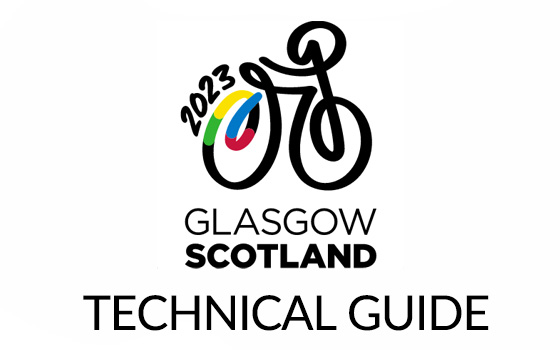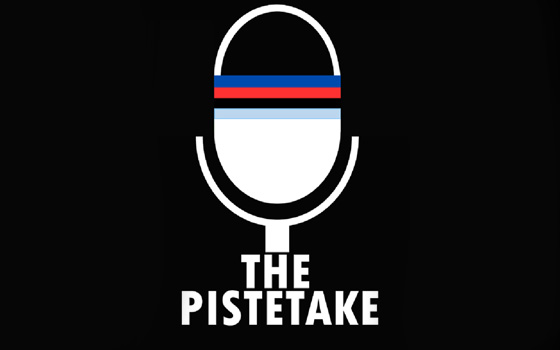Track Cycling Sprint Events
Track cycling events fit into two broad categories, Sprint races and Endurance races. Riders will typically fall into one category and not compete in the other. Riders with good all round ability in the junior ranks will decide to focus on one area or another before moving up to the senior ranks.
Sprint races are generally between 3 and 8 laps in length and focus on raw sprinting power and race tactics over a small number of laps to defeat opponents. Sprint riders will train specifically to compete in races of this length and will not compete in longer endurance races.
..........................................................................................................
Track Cycling Events - Keirin
The Keirin is a mass start Track Cycling event for Sprinters, created in 1948 in Japan but not included in the Olympic programme until 2000. Traditionally only six riders contest a Keirin but the number of riders can vary on the event, for example in the Japanese Keirin Series nine riders line up for each event. Click Here for More Information
..........................................................................................................
Track Cycling Events - Individual Sprint
Depending on the size of the velodrome, this event can be from 600 m to 1000 m. Unlike the sprints in athletics, these events do not usually start with riders sprinting from the starting line and they are not confined to lanes. The early parts of each race will often be highly tactical with riders pedaling slowly, as they carefully jockey for position, often trying to force their opponents up high on the track in an attempt to get their rivals to make the first move. Some even bring their bicycles to a complete stop, balanced upright with both feet still on the pedals (a track stand), in an attempt to make the other rider take the lead. The reason for this apparently strange behavior, as in many track cycling events, is both aerodynamics and tactics.
When racing at high speed, the rider who manages to stay just behind their opponent can draft, expending less effort. By riding behind the 'lead out' rider, the second rider reduces the aerodynamic drag they feel. Just before the finish, the trailing rider pulls out of the slipstream, and using their fresher legs may be able to overtake their opponent before the line. To prevent this, the leading rider may choose to accelerate quickly before the last lap, hoping to catch his opponent off guard and establish a large enough gap to negate the aerodynamic effect or to keep the speed high enough to prevent his opponent from completing a pass.
During the race, the 'lead out' rider may choose to hug the measurement line on the inside of the track, giving him the shortest path around the track, or he may choose to hug the sprinter's line, a red line 85 cm up track, to force his opponent to come higher over the top of him. The sprinter's line defines the sprinter's lane; once the sprint is initiated, riders may not drop into the sprinters lane or cross out of the lane unless they have a clear lead over their opponent.
..........................................................................................................
Track Cycling Events - Kilo/500m TT
At the UCI Track World Championships, the distance for senior men is 1000 metres, hence the event's alternative name, the 'Kilo', short for kilometer. Junior men race over 500 m. Being such a short, high-intensity event, the kilo is popular with riders who specialise in the sprint. The Kilo time trial was removed from Olympics programme after 2004, to make way for BMX racing. This led to a number of Kilo riders, most notably Chris Hoy, focusing on other sprint events.
This event is a straight out race against the clock from a standing start over 1000 m. Most indoor tracks are 250 m in length, so a kilo is usually held over 4 laps. Other common track lengths are 167 m (6 laps), 333 m (3 laps) or 400 m (2.5 laps). Riders will keep to the black line at the bottom of the track to ensure they have to cover the least distance over the 1000 m. Riders usually only get 1 attempt to set a time, and the winner of the event is simply the rider to post the quickest time.
The Women's version of the event is held over 500 m. Other than the race distance this is the same as the men's Kilo event, with the fastest rider over the distance declared the winner. This event was also removed from the Olympic programme after 2004 to make way for the BMX.
..........................................................................................................
Track Cycling Events - Team Sprint
Formerly known as the Olympic Sprint the Teams Sprint pits two teams of three riders against each other and the clock over three laps of the track. The task of the starting rider is to get out of the gate cleanly and bring the team up to high speed as quickly as possible. After one lap the first rider peels off to allow the second rider to make the pace. This rider completes their effort with one lap to go and then it's up to the final cyclist, traditionally a time trial specialist, to finish off.
The leading rider must not swing up until a full lap is complete and must peel off between an area of 15 metres before and after their start line, otherwise the team will be disqualified.
In the event of a false start the team is permitted another start. Only two starts are allowed.
Sprint races are generally between 3 and 8 laps in length and focus on raw sprinting power and race tactics over a small number of laps to defeat opponents. Sprint riders will train specifically to compete in races of this length and will not compete in longer endurance races.
..........................................................................................................
Track Cycling Events - Keirin
The Keirin is a mass start Track Cycling event for Sprinters, created in 1948 in Japan but not included in the Olympic programme until 2000. Traditionally only six riders contest a Keirin but the number of riders can vary on the event, for example in the Japanese Keirin Series nine riders line up for each event. Click Here for More Information
..........................................................................................................
Track Cycling Events - Individual Sprint
Depending on the size of the velodrome, this event can be from 600 m to 1000 m. Unlike the sprints in athletics, these events do not usually start with riders sprinting from the starting line and they are not confined to lanes. The early parts of each race will often be highly tactical with riders pedaling slowly, as they carefully jockey for position, often trying to force their opponents up high on the track in an attempt to get their rivals to make the first move. Some even bring their bicycles to a complete stop, balanced upright with both feet still on the pedals (a track stand), in an attempt to make the other rider take the lead. The reason for this apparently strange behavior, as in many track cycling events, is both aerodynamics and tactics.
When racing at high speed, the rider who manages to stay just behind their opponent can draft, expending less effort. By riding behind the 'lead out' rider, the second rider reduces the aerodynamic drag they feel. Just before the finish, the trailing rider pulls out of the slipstream, and using their fresher legs may be able to overtake their opponent before the line. To prevent this, the leading rider may choose to accelerate quickly before the last lap, hoping to catch his opponent off guard and establish a large enough gap to negate the aerodynamic effect or to keep the speed high enough to prevent his opponent from completing a pass.
During the race, the 'lead out' rider may choose to hug the measurement line on the inside of the track, giving him the shortest path around the track, or he may choose to hug the sprinter's line, a red line 85 cm up track, to force his opponent to come higher over the top of him. The sprinter's line defines the sprinter's lane; once the sprint is initiated, riders may not drop into the sprinters lane or cross out of the lane unless they have a clear lead over their opponent.
..........................................................................................................
Track Cycling Events - Kilo/500m TT
At the UCI Track World Championships, the distance for senior men is 1000 metres, hence the event's alternative name, the 'Kilo', short for kilometer. Junior men race over 500 m. Being such a short, high-intensity event, the kilo is popular with riders who specialise in the sprint. The Kilo time trial was removed from Olympics programme after 2004, to make way for BMX racing. This led to a number of Kilo riders, most notably Chris Hoy, focusing on other sprint events.
This event is a straight out race against the clock from a standing start over 1000 m. Most indoor tracks are 250 m in length, so a kilo is usually held over 4 laps. Other common track lengths are 167 m (6 laps), 333 m (3 laps) or 400 m (2.5 laps). Riders will keep to the black line at the bottom of the track to ensure they have to cover the least distance over the 1000 m. Riders usually only get 1 attempt to set a time, and the winner of the event is simply the rider to post the quickest time.
The Women's version of the event is held over 500 m. Other than the race distance this is the same as the men's Kilo event, with the fastest rider over the distance declared the winner. This event was also removed from the Olympic programme after 2004 to make way for the BMX.
..........................................................................................................
Track Cycling Events - Team Sprint
Formerly known as the Olympic Sprint the Teams Sprint pits two teams of three riders against each other and the clock over three laps of the track. The task of the starting rider is to get out of the gate cleanly and bring the team up to high speed as quickly as possible. After one lap the first rider peels off to allow the second rider to make the pace. This rider completes their effort with one lap to go and then it's up to the final cyclist, traditionally a time trial specialist, to finish off.
The leading rider must not swing up until a full lap is complete and must peel off between an area of 15 metres before and after their start line, otherwise the team will be disqualified.
In the event of a false start the team is permitted another start. Only two starts are allowed.



